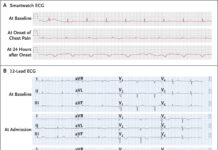Suicides by ingesting easily available tablets around the place are a common occurrence. In rural areas and farming lands, people use various pesticides and preservers to prolong the life of the produce. In such households, the accidental and suicidal occurrence of poisoning is common. But homicides using pesticides are a rare find.
Death within 3 hours with Almunium Phosphide!
Such an incident occurred when a man gave three tablets of aluminum phosphide to his 22 years old wife while she was pregnant. He told her that these tablets would help her give birth to a baby boy. Therefore, she willingly took the medicine coated in aluminum foil.
She fell unwell shortly after ingestion. The family transported her to the hospital. She was cognizant when she arrived at the hospital. Doctors carried out the gastric lavage. They suspected that it could be an incidence of aluminum phosphide intoxication. She went into cardiac arrest at about 1 a.m. and perished at 3.30 a.m.
Postmortem findings: green colour and garlicky smell.
The victim’s garments seem to be greenish discolored during postmortem investigation later that morning. There was no discernible smell in the area of the body or garments. Lips and fingernails were bluish in color. No secretion was visible from the mouth, ears, or nose. There were no signs of injury. And all of the organs were congested on the inside. The blood in the heart was dark red and viscous. The most eye-catching finding was in the stomach. The mucosa of the stomach was extremely congested, including around 100cc of greyish-green semi-solid substance with a garlicky odour.
There also were remains of two tablets with more or less unbroken aluminum foil. Aluminum phosphide was later discovered as the substance in the pills, which had a garlicky odour to it.
How does Aluminum Phosphide cause poisoning?
Aluminum phosphide is a solid fumigant insecticide. It also is inexpensive, simple to deploy, effective, and widely accessible on the market. It is widely used to prevent grains and is also is capable of killing rodents.
Tablets are typically sold in small containers, which are combined with the grain. When the tablets become wet, they emit phosphine. Phosphine fumigates and preserves the grain and is poisonous to not only pests, insects, and rodents, but is also to humans.
In the presence of hydrochloric acid and a moist environment, this gas is rapidly liberated. The majority of human toxicity cases are acute in nature. Caused by the toxic effects of phosphine, released in the stomach in the presence of moisture and hydrochloric acid. Despite the fact that phosphine is really a colorless and odourless gas, aluminium phosphide has quite a garlicky and decaying fish odour. Phosphine wreaks havoc on the body’s organs. It attaches to and inhibits cytochrome oxidase during the Krebs cycle, leading to cellular hypoxia. It also causes localised myocardial necrosis, which most often results in transmembrane ion exchange, resulting in arrhythmias and sudden death.
Slim survival chances…
The patient could only be salvaged if the amount consumed is less and the treatment is given promptly and efficiently. The duration of shock after the body is poisoned also determines if the patient is savable.




